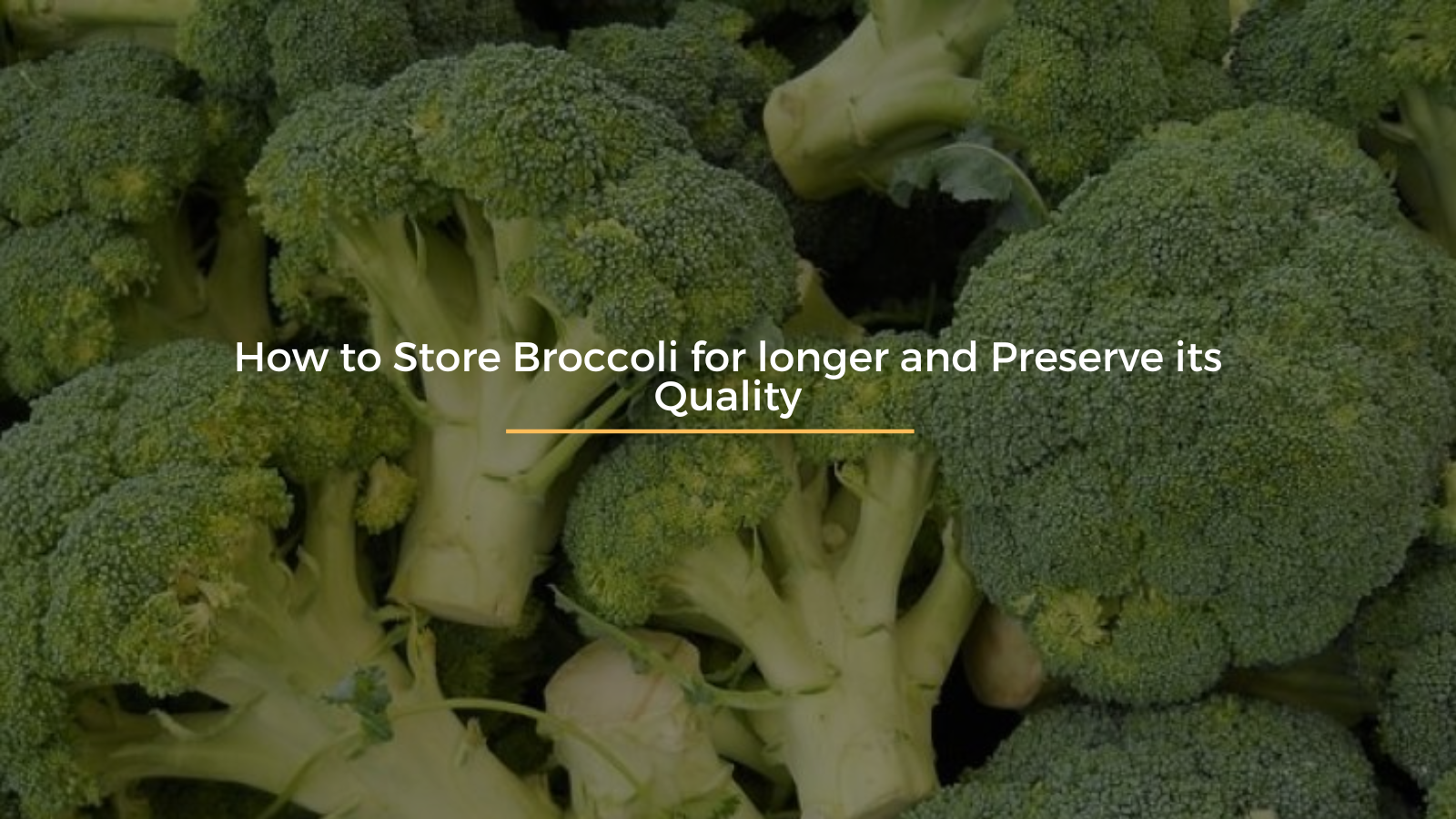
|
| How to Store Broccoli for longer and Preserve its Quality |
The Brassicaceae family includes the biennial, cruciferous vegetable broccoli. Other renowned members of this family are cauliflower, Brussels sprouts, and cabbage. The broccoli's scientific name is Brassica oleracea var. italica. Broccoli was a strict winter crop in the past, but new broccoli hybrids now allow for year-round growing in some regions.
The blossom head of broccoli is either green or purple. The broccoli's weight can range from 0.35 kilogram (considered quite tiny) to over 0.5 kg (considered relatively large) (0.8-1.1 lb). Market consumers primarily establish the required head weight.
Conditions for storing sliced broccoli
For broccoli to be effectively preserved and its excellent features to be held after the harvest, it requires specific and frequently conservative management.
It must be pre-cooled (1) in high-capacity pre-coolers shortly after harvesting. This procedure increases the product's shelf life since it removes the high temperature (from the field), which is detrimental to its longevity after harvest. Maintaining chilling conditions during all phases of product storage and delivery is critical. Always place sliced broccoli in dynamic, chilling chambers or rooms (3) to preserve it equally and without loss. The optimal conditions for keeping broccoli are -0 2-1 degrees Celsius (31,6-34 degrees Fahrenheit) and 90-95% relative humidity. Under these conditions, broccoli can be stored for up to 28 days after chopping. In contrast, when the temperature hits 5°C (41°F), the product's shelf life decreases to 14 days, and at 10°C (50°F), brocolli cannot store it for more than 5 days.
In addition, it is advised to leave much broccoli leaves on the head during storage. Optimally, eliminate ethylene and control carbon dioxide. Broccoli should not be stored with substances that emit ethylene. Ethylene hastens the yellowing of broccoli heads; 2 ppm of ethylene at 10 °C (50 °F) reduces the lifespan of plants. In certain instances, ozone can be introduced to break down ethylene and eliminate fungus spores. Lastly, carbon dioxide concentrations between 50,000 and 100,000 ppm assist in preserving quality and storage time. Low oxygen concentration decreases respiration rate, prolongs the storage period, and retains broccoli's green color and tenderness.
Flower heads should be packaged in perforated/semi-permeable films to prevent water loss during storage. In addition, using crushed ice in broccoli packaging for commercial transport has been effective.
Notes
- Pre-cooling is rapidly eliminating heat from items (usually right after harvest). This heat has been produced by a) the plant's fluctuating respiration and b) the ambient temperature during harvesting and storage.
- Structures that rapidly eliminate the product's warmth to preserve it.
- Dynamic cooling is required for items with long shelf life or particularly delicate, such as pears, kiwis, apples, plums, nectarines, peaches, apricots, etc. It is based on continuous multipoint monitoring of stored goods and refrigeration systems.
- Book: “Vegetables Long-Term Preservation: The Secrets”. («Λαχανικά Μακροχρόνια Συντήρηση: Τα Μυστικά».)
- www.isofruit.gr
- https://extension.tennessee.edu/publications/Documents/PB1904.pdf
- https://postharvest.ucdavis.edu/Commodity_Resources/Fact_Sheets/Datastores/Vegetables_English/?uid=6&ds=799#:~:text=Optimum%20Temperature,F)%20is%20about%205%20days.